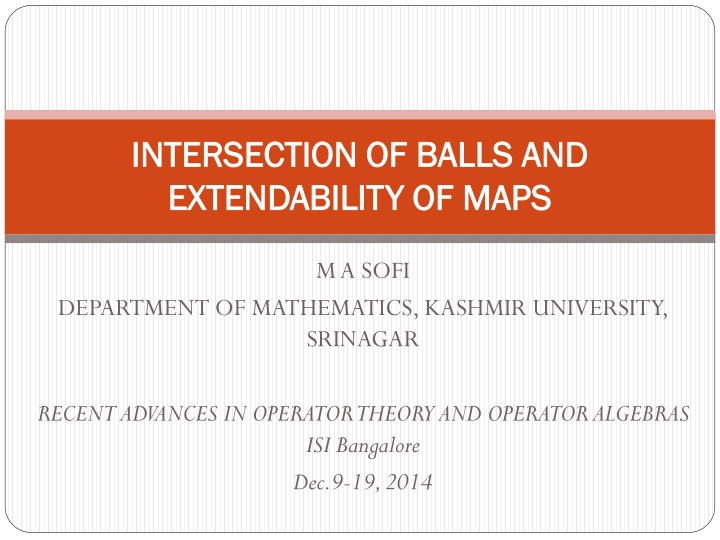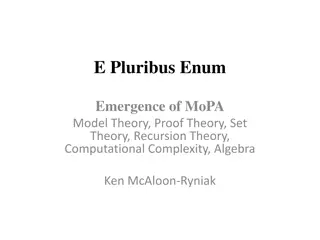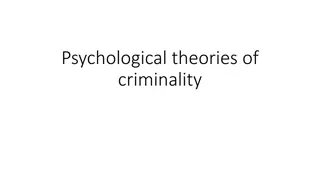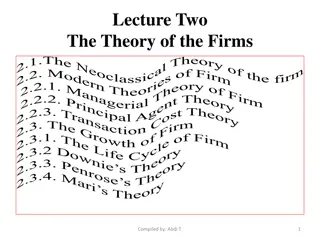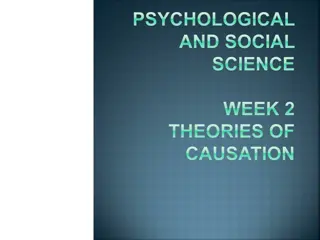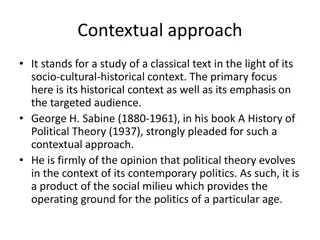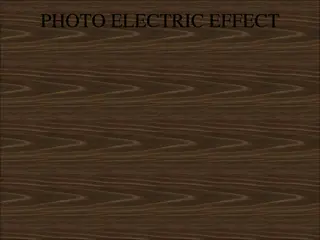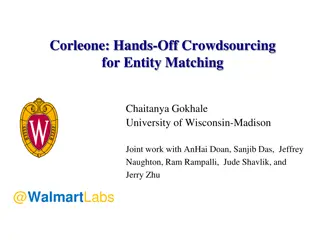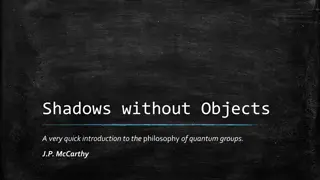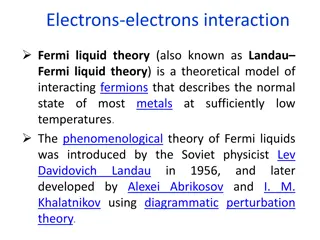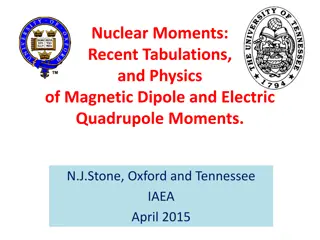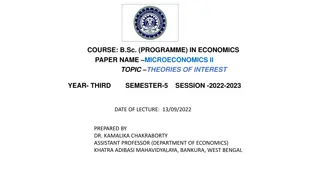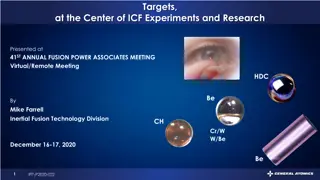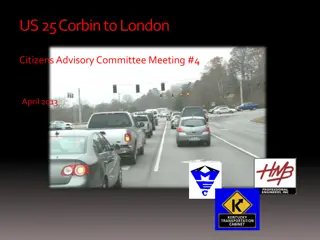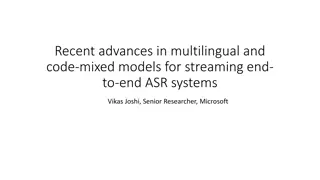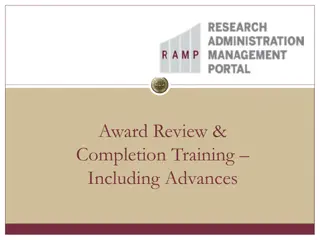Recent Advances in Operator Theory and Operator Algebras
Helly's theorem on intersection of balls, Jung's constant, and Banach spaces properties are explored in this study on operator theory and algebras. The relationship between 1-injective Banach spaces and intersection properties of balls is discussed, providing valuable insights for mathematical applications.
Download Presentation

Please find below an Image/Link to download the presentation.
The content on the website is provided AS IS for your information and personal use only. It may not be sold, licensed, or shared on other websites without obtaining consent from the author.If you encounter any issues during the download, it is possible that the publisher has removed the file from their server.
You are allowed to download the files provided on this website for personal or commercial use, subject to the condition that they are used lawfully. All files are the property of their respective owners.
The content on the website is provided AS IS for your information and personal use only. It may not be sold, licensed, or shared on other websites without obtaining consent from the author.
E N D
Presentation Transcript
INTERSECTION OF BALLS AND INTERSECTION OF BALLS AND EXTENDABILITY OF MAPS EXTENDABILITY OF MAPS M A SOFI DEPARTMENT OF MATHEMATICS, KASHMIR UNIVERSITY, SRINAGAR RECENT ADVANCES IN OPERATOR THEORY AND OPERATOR ALGEBRAS ISI Bangalore Dec.9-19, 2014
We begin by recalling Hellys famous theorem on the intersection of balls in ?: (a)Every finite family of convex sets in ? such that every subfamily of n+1 sets has a nonempty intersection has a nonempty intersection. (b) Every family of compact convex sets in ? has a nonempty intersection provided every subfamily of n+1 sets has a nonempty intersection.
One of the many interesting applications of Hellys theorem involves its use in the computation of the so-called Jung s constant of the Minkowski plane. Let us recall that Jung s constant?(?) of a Banach space X is defined to be the smallest positive number r such that each set of diameter 1 in X is contained in a ball of radius ? . It turns out that 2 2= 23 2 denotes the (Minkowski) plane equipped 1 ?(?) 2 and that ? 2 with the Euclidean norm. More generally, we have (i) ? ? . Here 2 2? ?+1,?????? = ?. 1 2 ,???? = 2 2? ?+1 (ii) ?. ? ? =
On the other hand, the class of Banach spaces X for which ? ? =1 are precisely those which are called injective (more precisely 1-injective) in the literature. These are those Banach spaces which satisfy the Hahn-Banach extension property for X-valued bounded linear maps. An alternative description of injective Banach spaces in terms of intersection of balls is given in the following theorem.
Theorem 1: For a Banach space X, TFAE: (i) X is 1-injective (ii) ? ? = 1. (iii)? has binary intersection property (BIP). Here (BIP) refers to the property that every collection of mutually intersecting balls has a nonempty intersection. This is a special case of the ? intersection property which is defined below:
Definition 2: For a given cardinal number ?, we say that a Banach space X has the ? intersection property if each family of ?-many mutually intersecting closed balls in X has a nonempty intersection. We make the following observations: (a)(BIP) is the same as ? intersection property for all cardinal numbers ?. (b) ?1 intersection property implies ?2 intersection property for all ?1 ?2. (a)4-intersection property is equivalent to k-intersection property for all ? 4.
Remark: The close connection between the (BIP) and Jungs constant as seen in Theorem 1 is not accidental. In fact, ? ? can be equivalently defined as the infimum of all positive numbers r such that for every family ?1 ??;? of mutually intersecting balls in X of equal radius, one has ??(??) . ?
The following theorem of Lindenstrauss describes the situation where it is possible to extend bounded linear maps from a Banach space to a larger space in which it is 1- codimensional. Theorem 3: For a Banach space X, TFAE: (i)For every pair of Banach spaces Z and Y with Z X, ???? ? operator from X into Y has a norm-preserving extension from Z into Y. (ii)X has 3-intersection property. = 1, dim Y= 2, every
A stronger result involving the extension of operators taking values in a larger space is the following famous theorem of Lindenstrauss. Theorem 4: For a Banach space X, TFAE: (i)For every pair of Banach spaces Z and Y with Z X, ???? ? operator from X into Y has a norm-preserving extension from Z into Y. (ii)For every pair of Banach spaces Z and Y with Z X, every compact operator from X into Y has a compact norm-preserving extension from Z into Y. (iii) For every pair of Banach spaces Z and Y with Z X, every weakly compact operator from X into Y has a weakly compact norm-preserving extension from Z into Y. (iv)? is an ?1 ? space for some measure ?. (v) X has 4-intersection property. = 1, dim Y= 3, every
As opposed to Theorems 3 and 4 where the range spaces are allowed to have dimensions at most 3, it is still desirable to extend bounded linear maps from X to a larger Banach space Z containing X as a 1-codimensional subspace, but taking values in an arbitrary Banach space. The appropriate ball-intersection property to deal with this situation is provided in the following theorem. Theorem 5: For a Banach space X, TFAE: (i) For every pair of Banach spaces Z and Y with Z X, ???? ? bounded linear operator from X into Y has a bounded linear extension from Z into Y. (ii) For every pair of Banach spaces Z and Y with Z X, ???? ? a continuous projection from Z onto X. (iii) Given a family ??? ??;? of mutually intersecting balls in X, there exists ? > 0 such that = 1, every = 1, there exists ????(??) ? .
Remark 6(a): The (BIP) corresponds to r=1 in (iii). Also if the smallest of real numbers r appearing in (iii) above is denoted E(X)- called the expansion constant of X- it turns out that the smallest norm of projections in (ii) is equal to E(X). (a)1 ?(?) ?(?) 2. The dual problem of extending bounded linear operators from subspaces Y of X to (larger) subspaces of X including Y as a 1-codimensional subspace, but taking values in an arbitrary Banach space can be resolved in terms of the so called ? ball property defined as follows.
Definition 7: Given a subspace Y of X and a cardinal ?, we say that Y has the ? ???????????? if each family of ?- many closed balls intersecting in X and having their centres in Y also intersect in Y. We note the following features of this property: (a)k+1-ball property implies k-ball property for all k 1. (b) k-ball property is equivalent to 3-ball property for all k 3. (c)A subspace Y of X has 3-ball property if and only if it is an M-ideal. (d)2-ball property does not imply 3-ball property.
The following theorem is due to Lindenstrauss. Theorem 8: For a (real) Banach space X and a closed subspace Y, TFAE: (i)Y has ? ball property for all cardinals ?. (ii)For each ? ?, each bounded linear map on Y (and taking values in an arbitrary Banach space) has a norm-preserving extension to span[Y, x]. As opposed to the existence of continuous (linear) extensions and its description in terms of intersection of balls, the issue involving the uniqueness of extensions from a subspace Y of X is addressed below in terms of the k-ball sequence property of Y.
Definition 9: Given a Banach space X and k , a subspace Y of X is said to have the k- ? (?) (?)= ?(?? ?,?? ?) such ball sequence property if for all sequences of balls ?? ?? ,??+1 in X, ?? ?=1 (?) ??+1 (?),?? ? ? ?, ? = 1,2, ? and ? that ?? ?? (?) ?? , ?=1 ?=1 it follows that ? (?) ? ?? . ?=1 ?=1 We shall say that X has the k-ball sequence property if each (closed) subspace of X has it.
Remark 10: It is easily seen that k+1-ball sequence property implies k-ball sequence property. More importantly, 3-ball sequence property is equivalent to k-ball sequence property for all ? > 3. Furthermore, there are examples of subspaces with 2-ball sequence property but lacking the 3-ball sequence property. Theorem 11: For a Banach space X, TFAE: (i)X has 2-ball sequence property. (ii)X has the uniqueness property of Hahn Banach extensions. As a strengthening of the uniqueness property of the HB-extensions (U-property, for short), we introduce the notion of Banach spaces having the SU-property (strong uniqueness property) defined below.
Definition 12: A Banach space X is said to have the SU-property if it has the U-property and each closed subspace Y of X is an ideal in X, i.e., ? (the annihilator of Y in ? ) = ker(P) for some norm-one projection P in ? . Theorem 13: For a Banach space X, TFAE: (i)X has SU. (ii)X has 3-ball sequence property. (iii)X has k-ball sequence property for all ? > 3. (iv)X is a Hilbert space.
The next property involving intersection of balls is motivated by the desire to extend nonlinear maps acting on subsets of Banach spaces. Interestingly, it turns out that in a certain sense, this particular variant of the intersection of balls subsumes Hilbert spaces and injective Banach spaces. Definition 14: Given a cardinal number ? and Banach spaces X and Y, we shall say that the pair (X, Y) has (K, ) property if for all families of vectors ??? and ??? in X and Y, respectively, with = ? such that ?? ?? ?? ??, ?,? and ? ?(??,??) .. it follows that ? ?(??,??) . . We shall also say that the pair (X, Y) has property (K) if it has (K, ) property for all cardinal numbers ?. Also, X is said to have property (K) if the pair (X, X) has it. The (K, ) property (hence property (K))can obviously also be defined for a pair of metric spaces.
Let us note the following properties of property (K) and its relationship with other ball properties: (a)? intersection property of Y implies (K, ) property for all cardinals . In particular, injectivity of Y implies property (K). (b)Hilbert spaces have property (K).
The promised relationship of property (K) with extendability of maps is given in: Theorem 15: Given a pair of metric spaces X and Y, TFAE: (i) (X, Y) has property (K). (ii) Given a subset A of X and a contractive (1-Lipschitz) map ?:? ?, there exists a contractive map on X extending f. Indeed, if ? ? and if ?:? ? is a 1-Lipschitz map, then for let z ? we consider the family of balls ?(?,?(?,?)? ? and ?(?(?),?(?,?))? ? in X and ?, respectively. Since ? ? ? ,? ? ? ?,? for all ?,? ? and since z obviously belongs to ?(?,?(?,?)) for each ? ?, the given hypothesis shows that there exists y ?(?(?),?(?,?)) for each ? ?. The assignment ? ? , therefore, gives the desired 1-Lipschitz extension of f to ? ? . Finally, a little Zornification yields an extension of f to a 1-Lipschitz mapping on the whole space ?.
Remark 16: It is interesting to observe that property (K) is, in some sense, exclusive to injective spaces and Hilbert spaces. This is the crux of the next theorem. Theorem 17: Let X be a separable dual Banach space such that X has property (K). Then X is either a Hilbert space or an injective Banach space. However, it is remarkable that the K-property of the pair (X, 2) characterises X as a Hilbert space. Theorem 7: For a Banach space X, TFAE: (i)(X, 2) has K-property. (ii)Given a subset A of X and a Lipschitz map ?:? 2, there exists a Lipschitz map ?:? 2 such that ? = ? on A. (iii)X is a Hilbert space.
This is the nonlinear analogue of the following theorem which goes back to Kakutani for the isometric case. The isomorphic analogue of the following statement follows from the famous Lindenstrauss-Tzafiriri complemented subspace theorem. Theorem: For a Banach space X with dim ? > 2, TFAE: (i)A bounded linear map defined on a closed subspace of X and taking values in an arbitrary Banach space Z extends to a bounded linear map on X. (ii) X is a Hilbert space.
A natural question that suggests itself at this stage is the following: As in the case of Hilbert spaces as noted above, whether a nonlinear analogue of Theorem1 is also valid, namely in the setting of X being a metric space. The appropriate property characterising 1-injectivity in this more general setting involves a certain ball-intersection property- which can be looked upon as the nonlinear analogue of the binary intersection property (BIP). The precise definition is given below:
Definition 18: A metric space X is said to be hyperconvex (in the sense of Aronszajn and Panitchpakdi) if ? ?(??,??) for any collection ??? in X and ??? + such that ? ??,?? ??+??, ?,? . Here is the promised characterisation in which the notions of 1-injectivity and absolute 1-Lipschitz retract have to be understood in the sense of metric spaces. Theorem 19: For a metric space X, TFAE: (i) X is 1-injective. (ii) X is hyperconvex. (iii)X is a 1- absolute Lipschitz retract.
We conclude with the following problem: (i)(P). Describe Banach spaces X such that for every Banach space Z with ? Z, each 1-Lipschitz map on X into 2 can be extended to a 1-Lipschitz map from Z into 2. Remarks: With 2 being replaced by an arbitrary Banach space Y in the above problem yields X as being 1-injective. We conjecture that Banach spaces determined by the above condition are exactly those which are Hilbert-Schmidt.
Selected References 1.Carlo Franchetti, Relationship between the Jung constant and a certain projection constant in Banach spaces, Ann Univ. Ferrara. Sez. VII, vol.23, 1977, 39-44. 2.B. Grunbaum, On some covering and intersection properties in Minkowski space, Pacific Jour Math. 9, 1959, 487-494. 3.M.D.Kirszbraum, Uber die Zusammenziehenden Transformationen, Fund. Math. 22(1934), 77-108. 4.J.Lindenstrauss, On the extension of operators with a finite dimensional range, Illinois Jour. Math.8(1964), 488-499. 5.J. Lindenstrauss, On nonlinear projections in Banach paces, Mich. Math. Jour. 11(1964), 263-287. 6.M. A. Sofi, Some Problems in functional analysis inspired by Hahn-Banach type Theorems, Annals of Functional Analysis, vol. 5(2), 2014, 1-29. und Lipschitzchen
